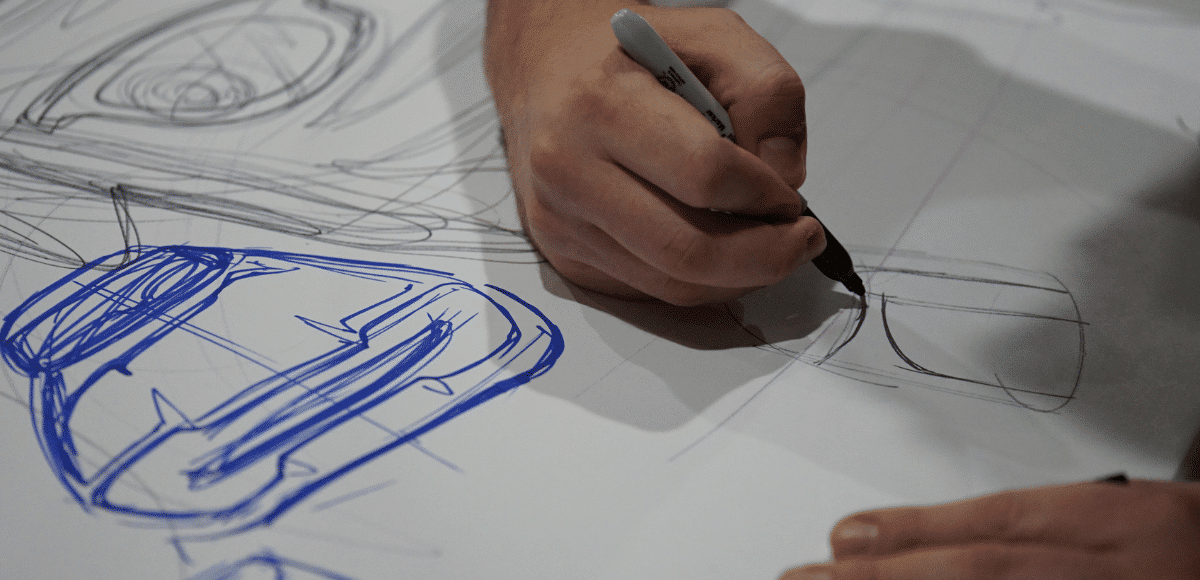
IDSA Design Protection Section
Charles Lee Mauro MSc CHFP / Joel Delman
Design Is Worth Protecting
If you are like most professional designers, regardless of your application area, your focus is routinely on challenging design problems. In such an environment, most of our design colleagues leave design IP – the legal protection of your work – to the lawyers. But times have changed, and for good reason.
The Increasing Value of Design
Based on research focusing on the business value of design combined with new research in neuroaesthetics, it is becoming clear that the design of products and, most specifically, the visual design of products, is far more critical to corporate success than initially thought. For the first time, we see leading corporations focusing on creating and managing robust design patent portfolios. However, not everyone thinks design protections should be strengthened to match the increased value of design. Most designers are surprised to find that there are leading technology companies which, for various reasons, work to dilute the strength of design IP, even though they employ dozens of designers.
What the LKQ v. GM Case Is About
And that brings us to the case at hand, LKQ v. GM, which raised a critical issue that goes to the heart of whether a design patent can be invalidated: What should be the proper test to determine if a design patent is “obvious” in view of the prior art? General Motors is supporting the current, well-proven 40 year-old test, while LKQ (a major manufacturer of replacement automobile body parts) wants to equate design patent obviousness to utility patent obviousness – which could greatly dilute design patent protection.
Accidents Waiting To Happen
The products involved in this case are seemingly mundane automobile crash parts, the kind your autobody repair shop purchases and installs when you have a fender bender. Seems like boring stuff, but under the hood is a massive legal war being waged by two global corporations. The battle has now gotten to the level of possibly damaging core design IP law on an enormous scale.
Design Patents on Parts
GM, of course, makes automobiles. However, for many years, GM (apparently for logistical reasons) did not manufacture most of its replacement body parts. Enter LKQ, which contracted with GM to produce those crash parts. GM being an astute entity, and a big supporter of design IP, applied for design patents on its overall automobile designs and on each automobile’s individual autobody parts…fenders, bumpers, headlights…you name it. And keep in mind that design patents only protect the ornamental design of objects. That is, just how things look visually.
So these GM design patents were for the same parts being produced by LKQ Corporation. When GM decided to start making its own replacement body parts, and terminated its agreement with LKQ, the parts supplier was suddenly faced with massive investments in tooling and production which were essentially useless.
Infringement Was Clear
LKQ, trying to stem massive losses, continued to produce GM aftermarket parts – the same ones covered by GM’s design patents. Not surprisingly, GM sued LKQ for patent infringement because all the replacement parts were, by nature, exact copies of the originals. The issue of infringement was essentially moot, those fenders and bumpers all infringed GM’s patents, leaving LKQ no place to hide.
But LKQ had one option, utilized by many defendants in design IP cases: attack the validity of GM’s patents.
Invalid Thinking
LKQ argued that the GM design patents were invalid because the designs are “obvious” in light of what came before them. In other words, that they did not protect new or original designs. And of course that can be a valid argument, with case law and procedures supporting how one goes about determining if a patented ornamental design is obvious.
Combinations and Then Some
The currently accepted test for obviousness requires the defendant to find an example of a product that came before the patent was filed which is “basically the same” as the patented design. This, however, is no easy task given that designers strive to create differentiation, not copies. Since it is nearly impossible to find one exact design which meets that criteria, the courts permit defendants to find additionals visual designs that, when combined with the first example, achieve a substantially similar design through a combination of what are called primary and secondary references. It is far from a perfect test, but current law is generally clear and has been used in many cases over the years.
Appealing To a Higher Order
So LKQ attempted to invalidate GM’s design patents at trial but, not surprisingly, was soundly rejected. With every loss, LKQ appealed to a higher court. And that’s where we are today. LKQ has now appealed to the Court of Appeals for the Federal Circuit (CAFC), and has asked the court to change the law for determining obviousness. LKQ is essentially recommending that the court allow the combination of any number of prior designs to prove a patent is invalid as obvious, until they have a design that is the same as the GM patented designs. And interested parties have stepped in on both sides of the issue, filing what are known as amicus briefs (literally, “friend of the court”) to argue their positions.
LKQ’s Side
On the side of LKQ, a group of law school professors led by Mark Lemley of Stanford Law School have written a series of amicus briefs supporting LKQ’s requested change to the test for obviousness. Here is a copy of one their briefs. Should the court agree with LKQ and allow defendants to continue to patch together any number of visual design features from virtually any products in the marketplace, it could bring about dire consequences for the future value of design patents. It would permit them to be invalidated far more easily – too easily – than they can be under current law. And as you might imagine, that’s very concerning to our profession.
IDSA’s Response
The Design Protection Committee solicited support of IDSA members Tim Fletcher, FIDSA and attorney Robert Katz, A/IDSA for their expertise and guidance. Katz’s firm, Banner & Witcoff, helped draft the amicus brief that IDSA submitted for the LKQ v. GM case, which proffered design-driven recommendations to resolve the test for obviousness using new procedures and methods. Rather than expound on all the details of IDSA’s proposal, you can read the brief by clicking the button below.
Such legal advocacy is a critical part of what IDSA, and in particular IDSA’s Design Protection Committee does, and we have written prior amicus briefs that have been signed by the world’s leading designers, architects, and fashion designers. Click here to read our prior brief in Apple vs. Samsung, sent to the US Supreme Court. Charles Mauro, Co-Chair of the committee, also partnered with noted design law attorney Perry Saidman to write a separate brief in the LKQ litigation, which can be read here:
If you have an questions about the LKQ v GM case, IDSA’s amicus brief in this matter or IP protection of design in general, please don’t hesitate to reach out to the Chairs of the Design Protection Committee, Joel Delman and Charles Mauro.
Charles Lee Mauro CHFP: [email protected]
Joel Delman: [email protected]
Co-Chairs, IDSA Design Protection Committee
If you have any questions about the work of IDSA’s Design Protection Committee or are interested in joining, you can reach out to IDSA’s Executive Director, Donté P. Shannon, FASAE, CAE.
Donté P. Shannon, FASAE, CAE: [email protected]
Executive Director, IDSA
